H5N1 clade 2.3.4.4b dynamics in experimentally infected calves and cows
- PMID: 39321846
- PMCID: PMC11754106
- DOI: 10.1038/s41586-024-08063-y
H5N1 clade 2.3.4.4b dynamics in experimentally infected calves and cows
Abstract
In March 2024, highly pathogenic avian influenza virus (HPAIV) clade 2.3.4.4b H5N1 infections were reported in dairy cows in Texas, USA1. Rapid dissemination to more than 380 farms in 14 states followed2. Here we provide results of two independent clade 2.3.4.4b experimental infection studies evaluating the oronasal susceptibility to and transmission of a US H5N1 bovine isolate, genotype B3.13 (H5N1 B3.13), in calves, and the susceptibility of lactating cows following direct mammary gland inoculation of either H5N1 B3.13 or a current EU H5N1 wild bird isolate, genotype euDG (H5N1 euDG). Inoculation of the calves resulted in moderate nasal replication and shedding with no severe clinical signs or transmission to sentinel calves. In dairy cows, infection resulted in no nasal shedding, but severe acute infection of the mammary gland with necrotizing mastitis and high fever was observed for both H5N1 isolates. Milk production was rapidly and markedly reduced and the physical condition of the cows was severely compromised. Virus titres in milk rapidly peaked at 109 50% tissue culture infectious dose (TCID50) per ml, but systemic infection did not ensue. Notably, the adaptive mutation E627K emerged in the viral polymerase basic protein 2 (PB2) after intramammary replication of H5N1 euDG. Our data suggest that in addition to H5N1 B3.13, other HPAIV H5N1 strains have the potential to replicate in the udder of cows and that milk and milking procedures, rather than respiratory spread, are likely to be the primary routes of H5N1 transmission between cattle.
© 2024. The Author(s).
Conflict of interest statement
Competing interests: The J.A.R. laboratory received support from Tonix Pharmaceuticals, Genus plc, Xing Technologies and Zoetis outside of the reported work. J.A.R. is inventor on patents and patent applications, owned by Kansas State University, on the use of antivirals and vaccines for the treatment and prevention of virus infections. The other authors declare no competing interests.
Figures



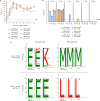



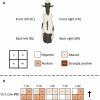
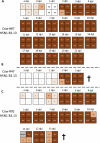

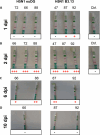

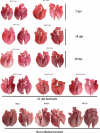
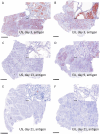


References
-
- HPAI Confirmed Cases in Livestock (US Department of Agriculture, 2024); https://www.aphis.usda.gov/livestock-poultry-disease/avian/avian-influen....
-
- Technical Report: June 2023 Highly Pathogenic Avian Influenza A(H5N1) Viruses (Centers for Disease Control and Prevention, 2023); https://www.cdc.gov/bird-flu/php/technical-report/h5n1-070723.html?CDC_A....
-
- The Panzootic Spread of Highly Pathogenic Avian Influenza H5N1 Sublineage 2.3.4.4b: A Critical Appraisal of One Health Preparedness and Prevention (World Health Organization, 2023); https://www.who.int/publications/m/item/the-panzootic-spread-of-highly-p.... - PubMed
MeSH terms
Grants and funding
LinkOut - more resources
Full Text Sources
Medical

